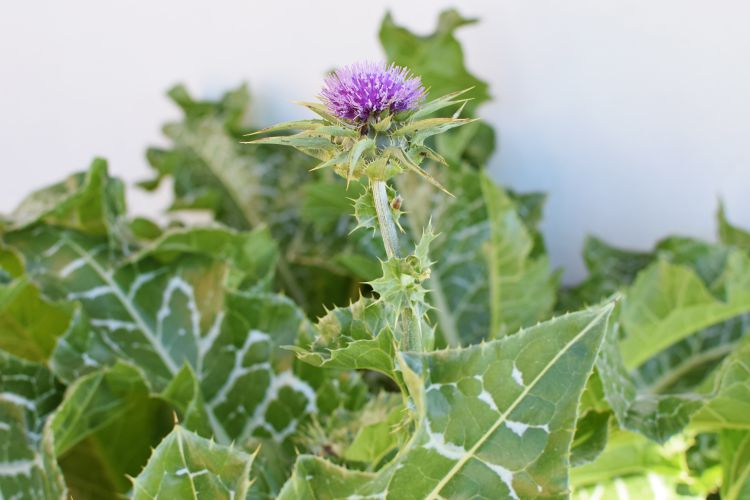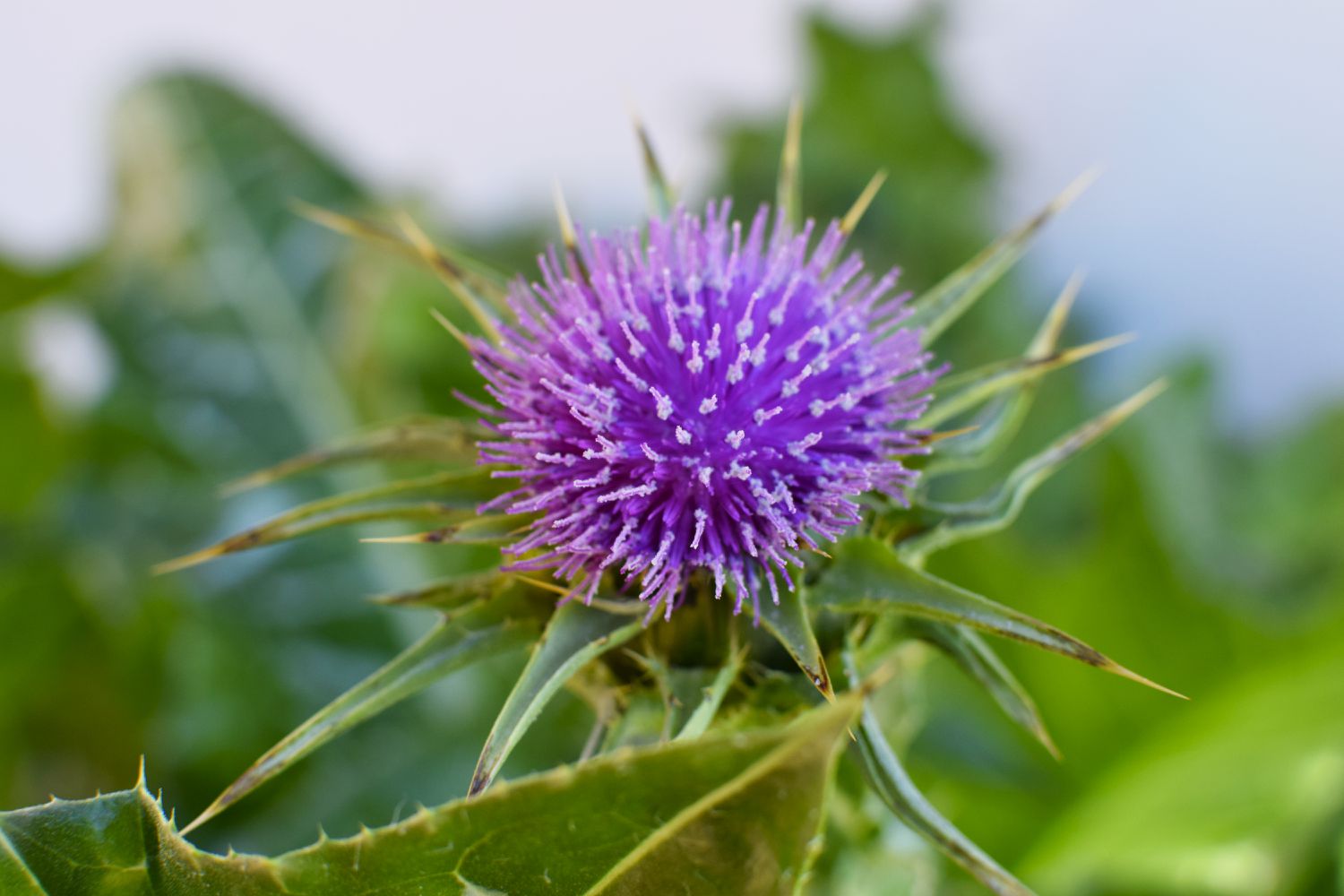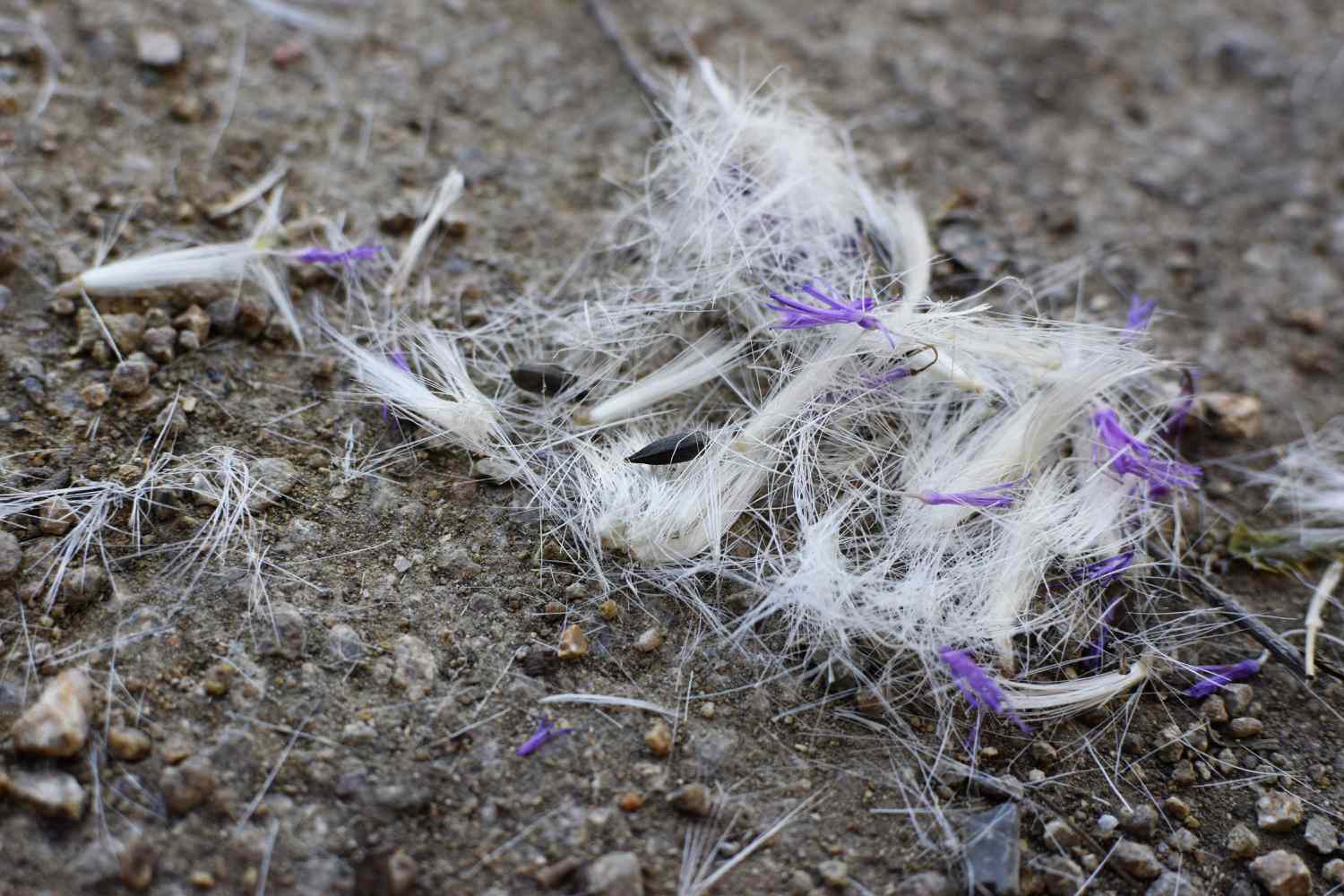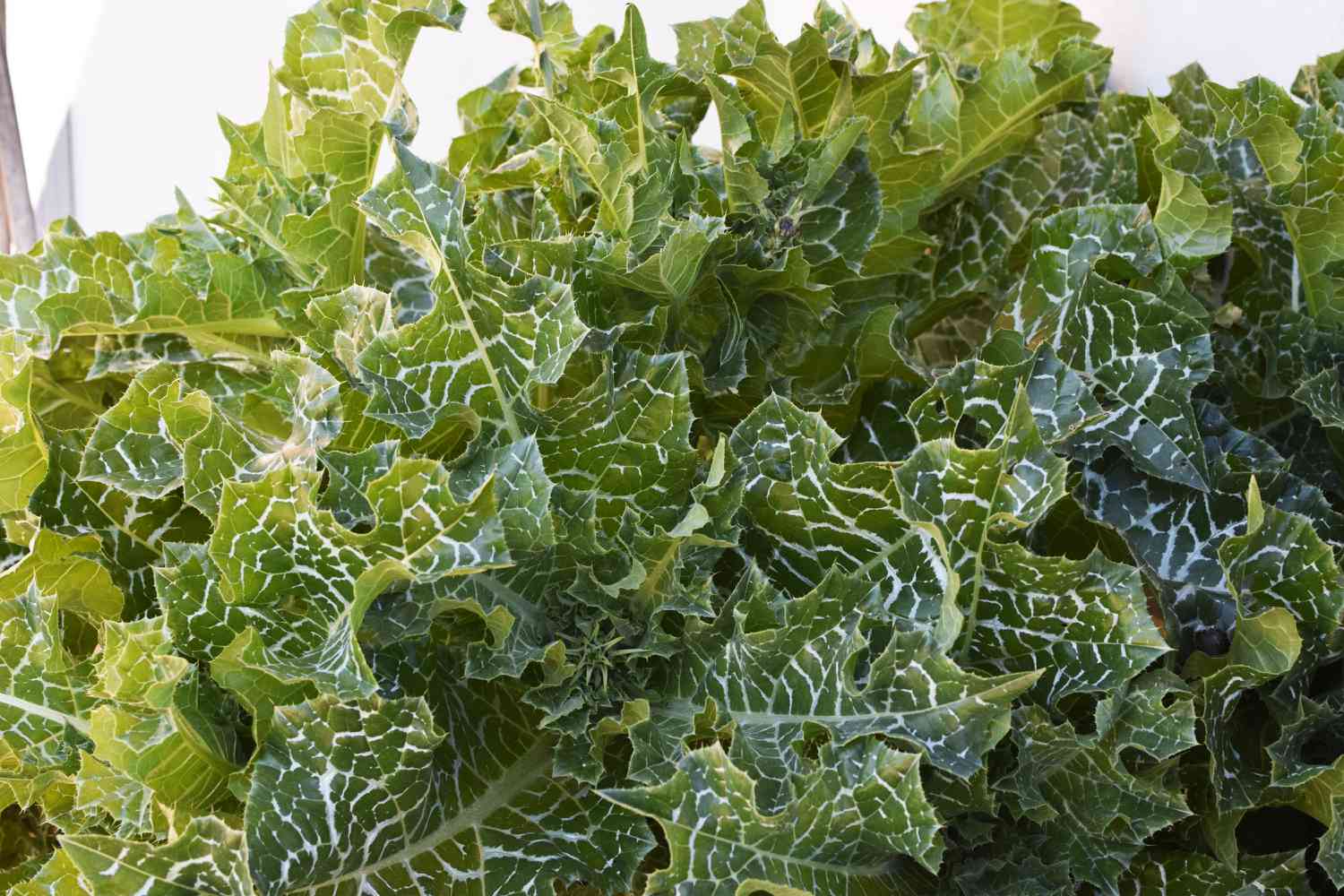Contents

Milk thistle, a plant brought to North America during colonial times, has a long history of medicinal use. Over time, it has spread beyond cultivated areas and can now be found in various regions across the United States. This thistle is easily recognizable due to the distinctive white streaks on its large, dark green, and smooth leaves. Originally from the Mediterranean, it thrives in dry, rocky environments. Milk thistle is classified as an invasive species, as it tends to form dense clusters that can outcompete native flora, limiting their access to essential resources like water, sunlight, and nutrients.



How Does Milk Thistle Appear?
Recognizing a specific species of thistle can be challenging due to their similar appearances. However, milk thistle stands out, making its identification relatively straightforward. The unique white streaks on its dark green leaves are a key characteristic, which is also the reason behind its name. The leaves are sizable, reaching lengths of up to 20 inches, and are lobed and smooth. The edges of the leaves are spiny, with spines that can measure up to half an inch.
The milk thistle has a life cycle that lasts more than two years. It is categorized as a winter annual, meaning its seeds sprout during the fall and winter, and the plant begins its vigorous growth in the spring. During this season, milk thistle develops a substantial rosette that can measure up to 3 feet across. From this rosette, a tall, robust stem develops, branching out to heights of 6 feet or more. Between April and October, a single large purple flower, approximately 2 inches in diameter and spiky, blooms at the top of the stem. Once the plant produces seeds, which are dark brown and roughly ½ inch in length, it completes its life cycle and dies.
Milk thistle features a long taproot that enables it to thrive in arid conditions.
Ways to Eliminate Milk Thistle
No matter which method you choose for removal, the key is to eliminate the plant as early as possible, ideally when it is still a small rosette in the spring. If you miss this early window, it is crucial to remove the milk thistles before they begin to bloom. If the plants have already formed flower buds or are in bloom, you should carefully cut off the flower heads, place them in a bag, and dispose of them in the trash. Avoid adding them to your compost, as the flowers can still generate seeds even after removal.
For a limited area, manually pulling out the plant can work well, but be cautious of the spines and remember to use protective gloves. Since the plant features a deep taproot, you may require a shovel or a different tool to completely extract it, especially if the soil is hard.
In cases of significant infestations that cannot be controlled manually, mowing milk thistles is ineffective, as they may regrow and continue to bloom. For extensive infestations, herbicides can be employed, such as a broadleaf herbicide (like 2,4-D or clopyralid) or a broad-spectrum herbicide. It is essential to apply either option in the spring, prior to the emergence of flower stems. Be sure to adhere to the label guidelines regarding dosage and timing.
Applying a herbicide to the area does not ensure that milk thistle won’t reemerge from seeds that remain in the soil. Therefore, it’s important to monitor for new seedlings and either remove them by hand or apply herbicide as necessary.
Ways to Stop Milk Thistle from Spreading
Once you have eliminated the milk thistle, it’s crucial to quickly replant the area. Select a species that thrives in the existing conditions and has a dense growth habit. A native perennial grass, like wood grass, would be a great choice. If the infestation was significant, there may still be viable seeds in the soil. By promptly covering all exposed soil with other plants, you can prevent the milk thistle from reestablishing itself.
Can you consume milk thistle?
Milk thistle has a long history of being utilized as a natural treatment, primarily because of its active compound, silymarin. Nevertheless, further research is required to fully understand its safety, so unrestricted consumption is not advised.
Are there native thistle species I can use as an alternative to milk thistle?
The Cirsium genus, comprising over 62 species, is among the most varied native thistles. To find out which native thistle is most appropriate for your region, reach out to your state’s native plant society or visit a nearby native plant nursery.
What are the potential adverse effects of taking milk thistle?
Milk thistle may trigger allergic responses in individuals who are sensitive, particularly in those who have existing allergies to related plants.


:max_bytes(150000):strip_icc()/controlling-and-preventing-bindweed-2540090-hero-9209ac53971941398b8bf900582a1b0c.jpg?resize=200&w=200) Ways to Recognize and Eliminate Bindweed
Ways to Recognize and Eliminate Bindweed Tips for Cleaning and Maintaining a Mattress Protector
Tips for Cleaning and Maintaining a Mattress Protector BALCONY REPAIR – Expert Solutions for Ensuring Long-lasting Balcony Repairs
BALCONY REPAIR – Expert Solutions for Ensuring Long-lasting Balcony Repairs